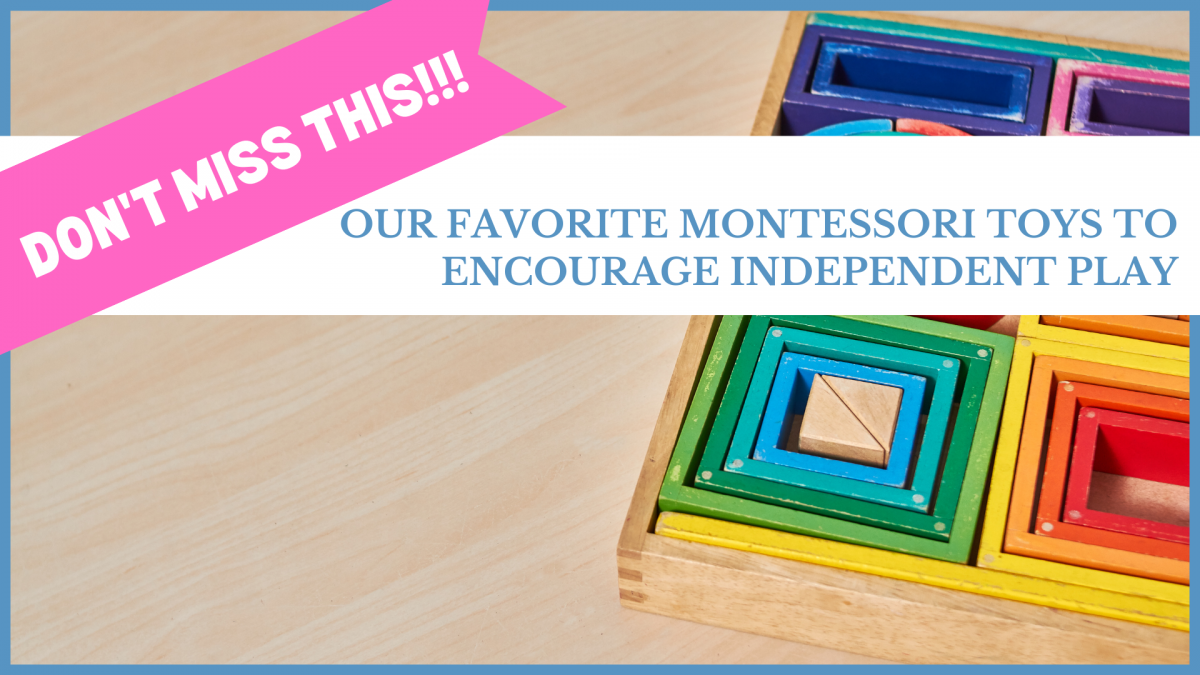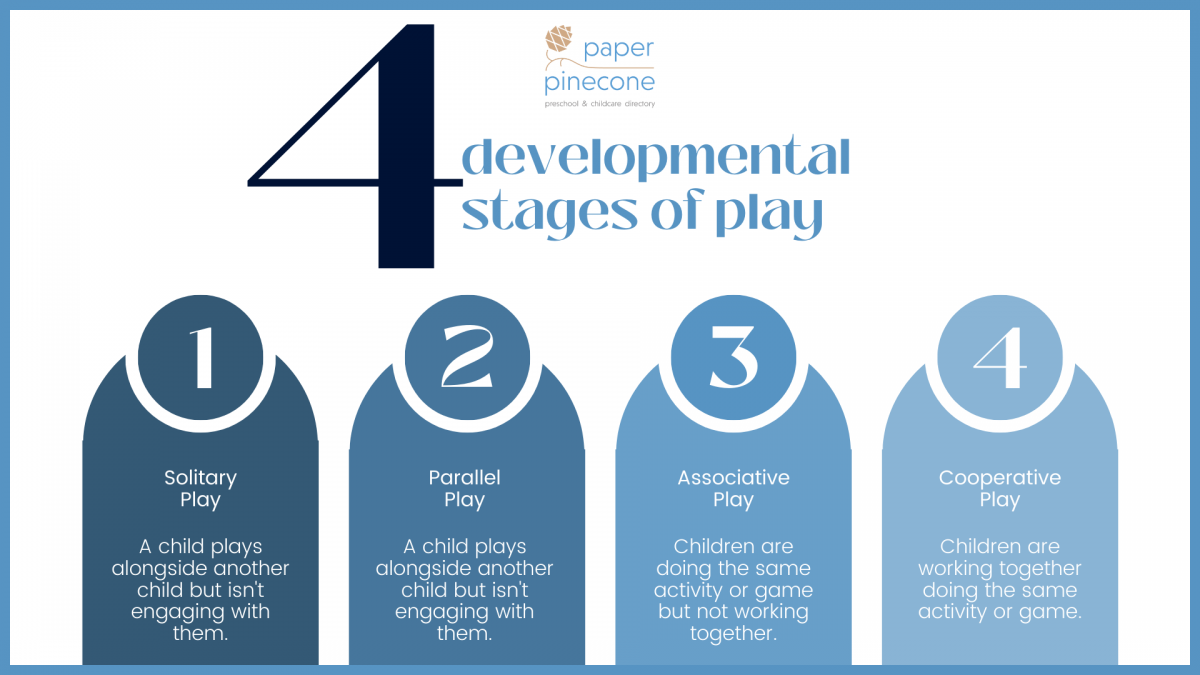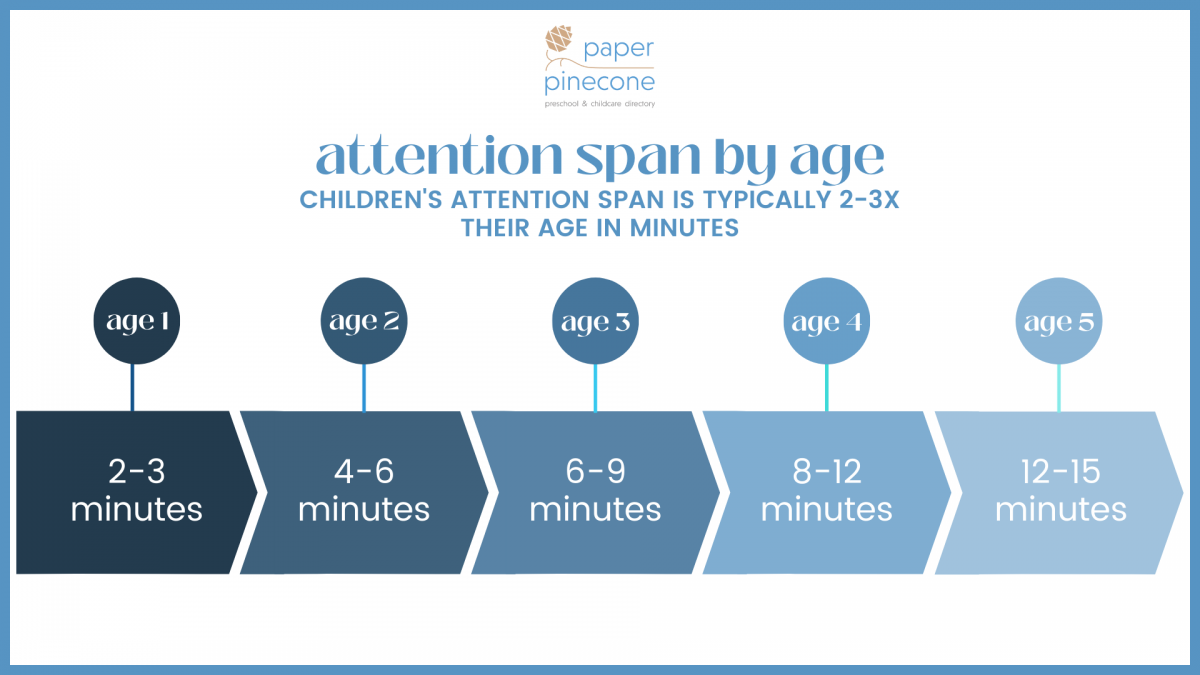The Best Tips to Encourage Independent Play
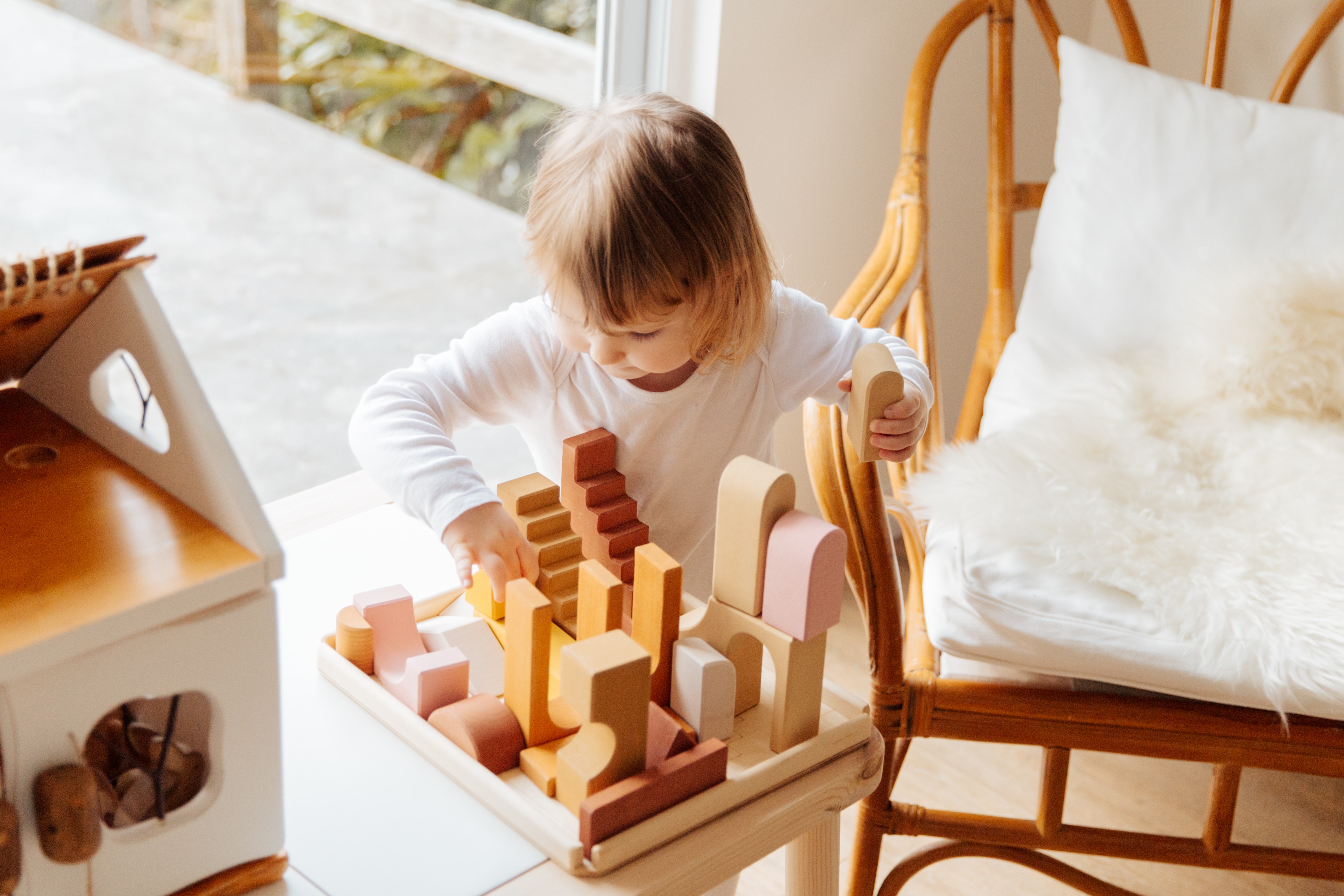
Published Date: 04/07/22
If you only have a minute:
- There are big benefits to independent play time. It helps children build their confidence, develop their fine motor skills, and encourages creativity, while teaching patience and problem solving.
- Give your child space to play on their own while you are nearby, but don't ignore them.
- Create a "yes" play area for your child that is safe and engaging with open-ended toys where they can feel comfortable in their own space.
- Give your child plenty of one-on-one attention right before you lead them into independent play.
- Start by occasionally sitting back when your child is engaged in their play and do not interrupt to "fix" what they are working on or comment on your child's play.
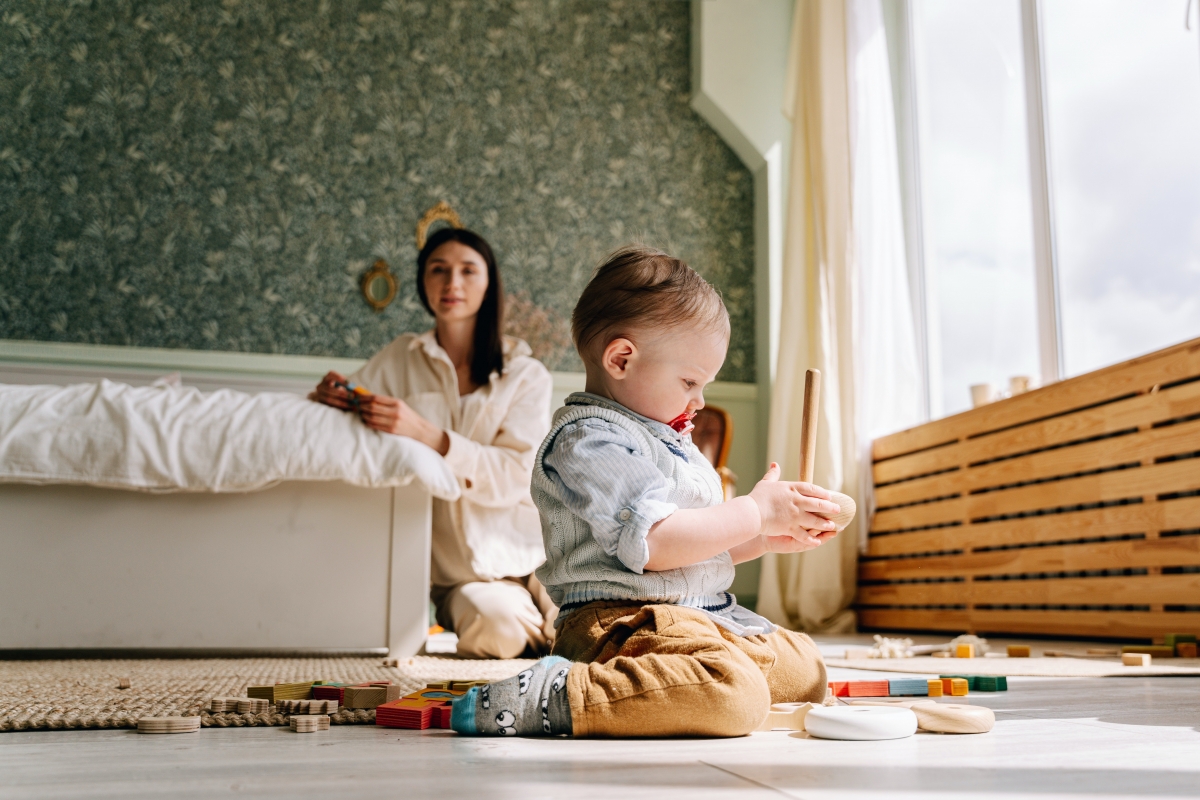
Everything you need to know about teaching your child to play independently
You love your child but you can't spend every moment at tea parties with stuffies and talking in silly voices, you can only do it so much and you have other responsibilities to tend to.
Engaging with your child is essential and while you enjoy bonding with them, it is important for your child to learn to play independently but it can seem impossible when they always want you right next them, engaged in every aspect of their play (sound familiar?).
It won't happen overnight but there are techniques you can use from an early age to encourage independent play time which greatly benefits them as well as you.
If you want to know how to encourage independent play and how it can benefit your family, read on and learn:
Why is independent play important?
How early should I introduce independent play to my child?
How can I start independent play time with my baby?
How long can babies play by themselves?
How can I get my child to play independently (tips)?
How can I create an independent play space for my child?
How can I encourage independent play when my child doesn't want to be alone?
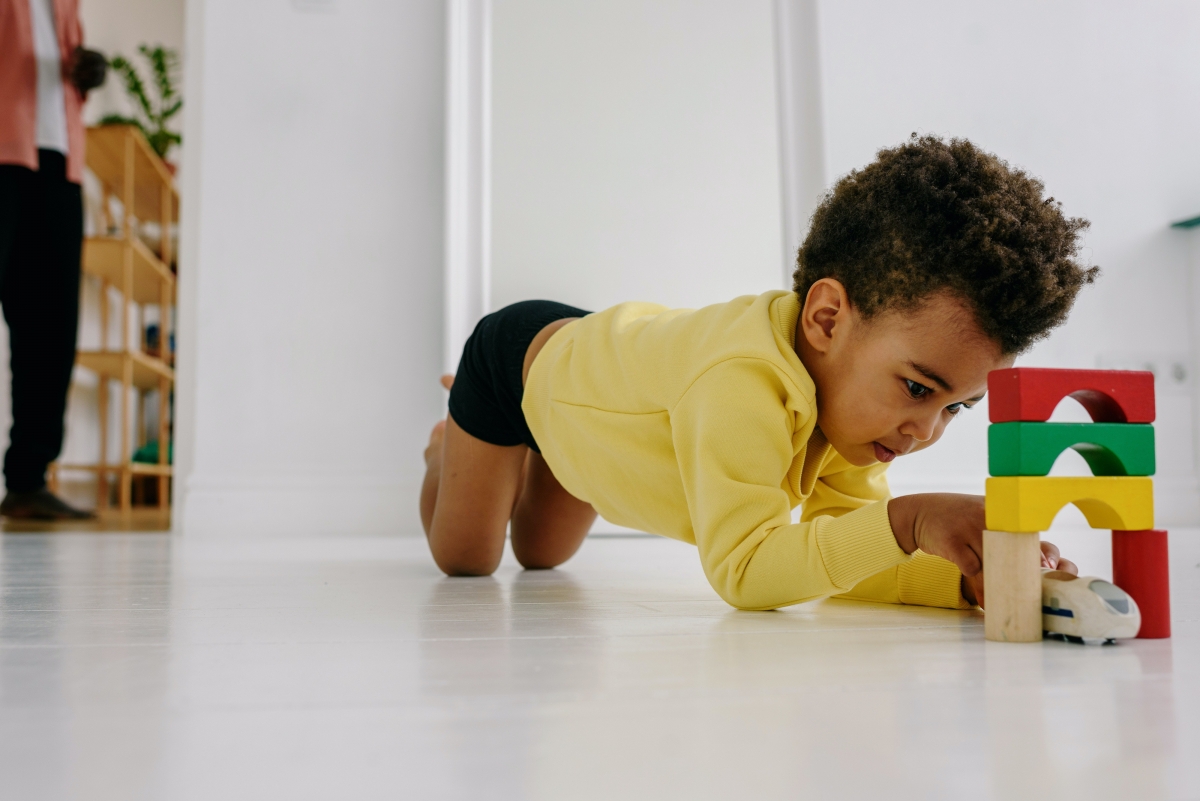
What is independent play?
Independent play does not mean leaving your child playing alone in a different room. Independent playtime is when a child plays on their own with a parent nearby.
It could be a baby getting tummy time in a safe area while the parent folds clothes nearby or a toddler coloring while mom goes through bills at the same table.
While playing with your child is absolutely crucial, that doesn't mean that you have to entertain or play with them every second of the day. Independent play is important for their development.
Playing independently has big benefits as it raises your child's self-esteem and teaches self-reliance and patience.

sit back and watch as your child plays and makes discoveries on their own without being interrupted.
Why is independent play important?
Interacting and playing with your child teaches them many skills but they learn self-reliance and perseverance when they experience solo play.
Playing alone allows children to use all of their senses and develop their creativity and imagination, especially if parents aren't hovering over them, telling how they should use a toy or object.
As parents, it can be hard to not get involved when we see our child putting a puzzle piece in the wrong way but it's important that kids have space to master skills on their own.
Kids learn by playing and interrupting their focus to show them how to do things can frustrate them when they are learning and diminishes their own abilities to learn problem solving.
While it's lovely to encourage our children and celebrate their accomplishments, overpraising them with "Good job" for every little thing they do can take away from their intrinsic motivation, leading them to "perform" for accolades and reducing their sense of achievement.
"Eco friendly, safe, bpa-free - bamboo plates with lids"
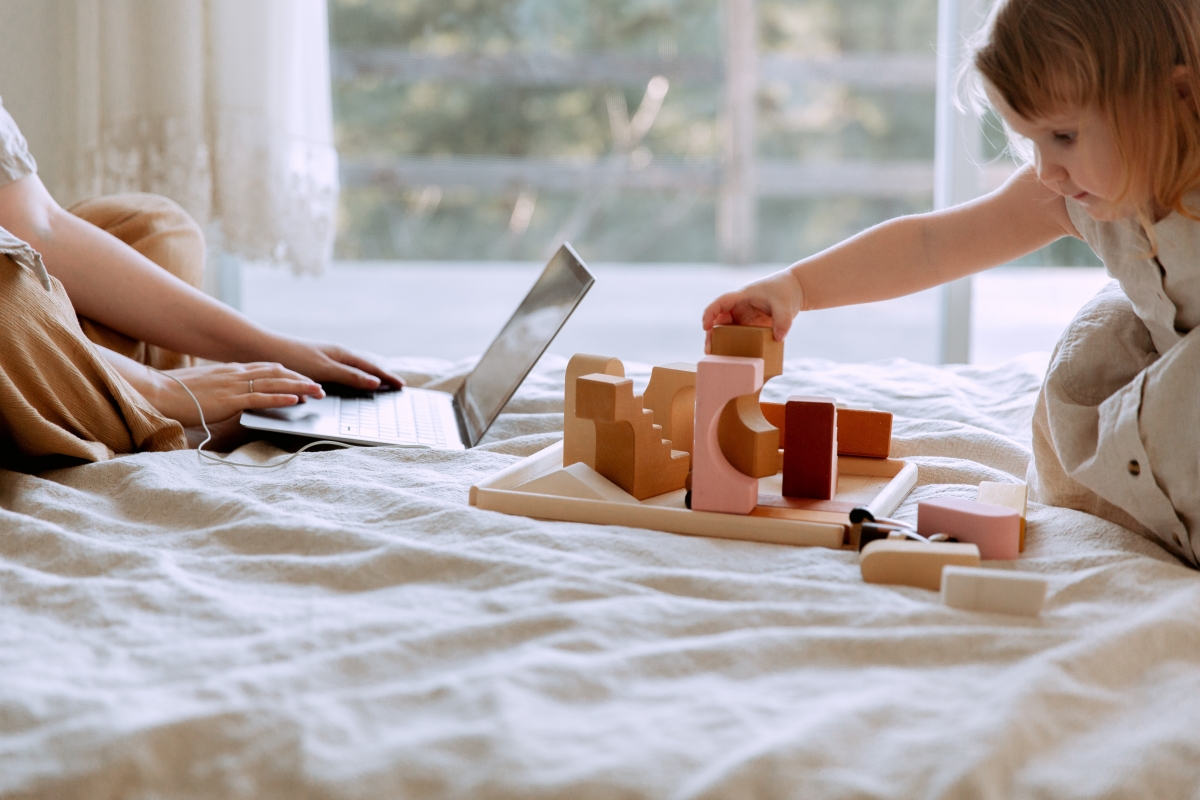
Parallel play lets your child feel safe being near you while allowing you to complete tasks.
Independent play is helpful for the whole family.
Raising children who enjoy playing independently helps parents give one-on-one time to each child. When children are able to play alone for a bit, parents won't feel stretched as thin between siblings.
Independent playtime also gives parents time to catch up over a quick cup of coffee (or a glass of wine). It may not be the alone time that you desire but quiet moments to connect are important, even if only for 10 minutes.
When children have the ability to play quietly on their own, it gives parents time to accomplish chores or other tasks. This is especially helpful in today's world where many parents are still working from home.
You may also enjoy: The benefits of a Montessori floor bed.

Teaching your child to play independently can make it easier to tend to other children or tasks.
How early should I introduce independent play to my child?
Having a baby is exciting for a new mom and baby carriers make it convenient to keep them close but even babies from a young age can benefit from small increments of independent play time, with a parent nearby.
It's important for young babies a few months old to have space to practice tummy time which eventually turns into practice rolling, crawling, and pulling themselves up.
When baby has "alone" time (near a watchful parent of course) they have the ability to investigate something new without any interference from parents who tend to show them how to engage with their toy.
As baby has fun learning through play and developing their strength, they will grow confident playing independently and while you enjoy a few moments to yourself.
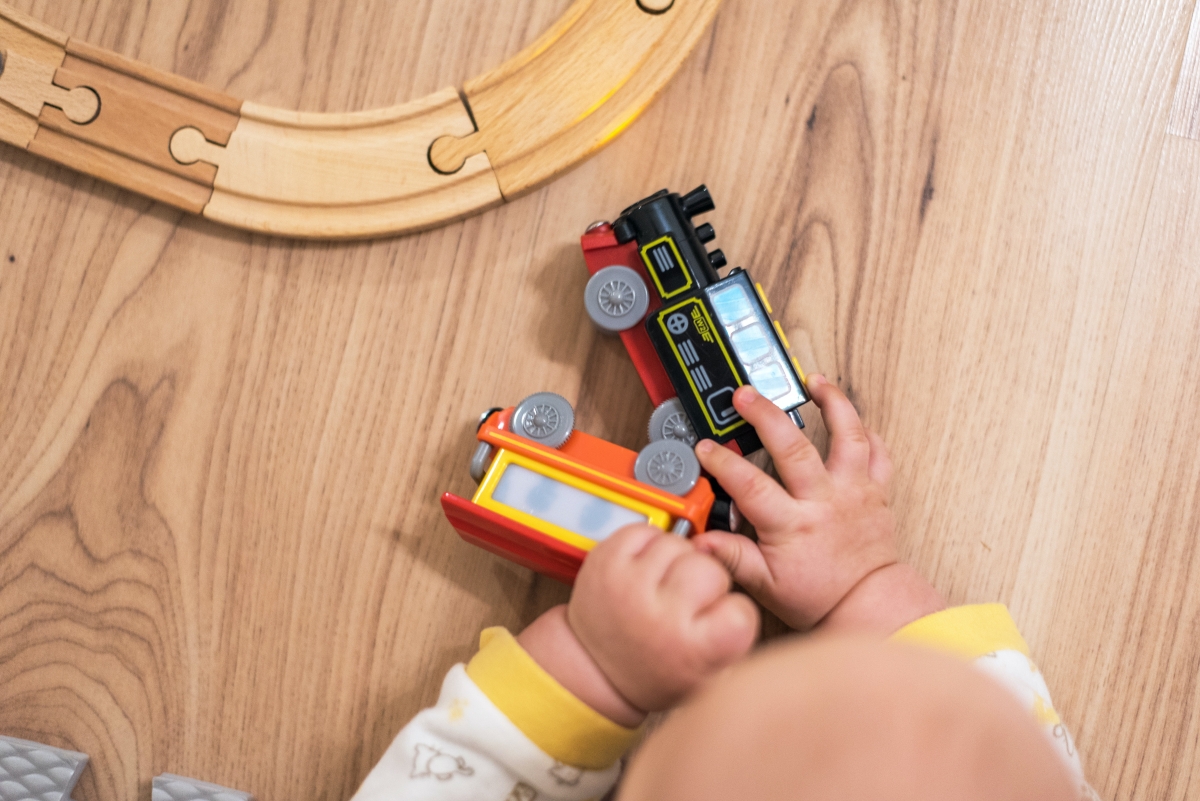
Baby tummy time is the perfect opportunity to let baby play as you sit back and watch.
How can I start independent play time with my baby?
Playing alone for babies doesn't mean you leave your baby alone, it can be as simple as giving them tummy time with an activity center or 5 minutes on the living room floor with an open-ended toy while you are nearby folding laundry or doing other tasks.
You can start by letting baby relax in their crib when they wake up. If they are content and seem happy looking at a hanging mobile, don't rush to pick them up the second they are awake.
For young babies, you can give them a sensory toy to explore as you tidy the room for even a few minutes to help them feel relaxed in their own space.
As your baby grows into the toddler stage, they will be used to short periods of solo play without you directly being involved which will make it easier to increase the time they can play on their own.

If your baby is content in the crib after a nap, allow them to stay in there for a few minutes before picking them up.
How long can babies play by themselves?
Every child is different and their temperament will play a role in how long they can play alone. Be sure that baby is rested, fed, and changed so they are in a cooperative mood.
Six-month-old babies might only be able to play independently for 5 minutes, 12-month-olds for 15 minutes, and 18-month-olds for 15-20 minutes. Remember to not leave babies unattended.
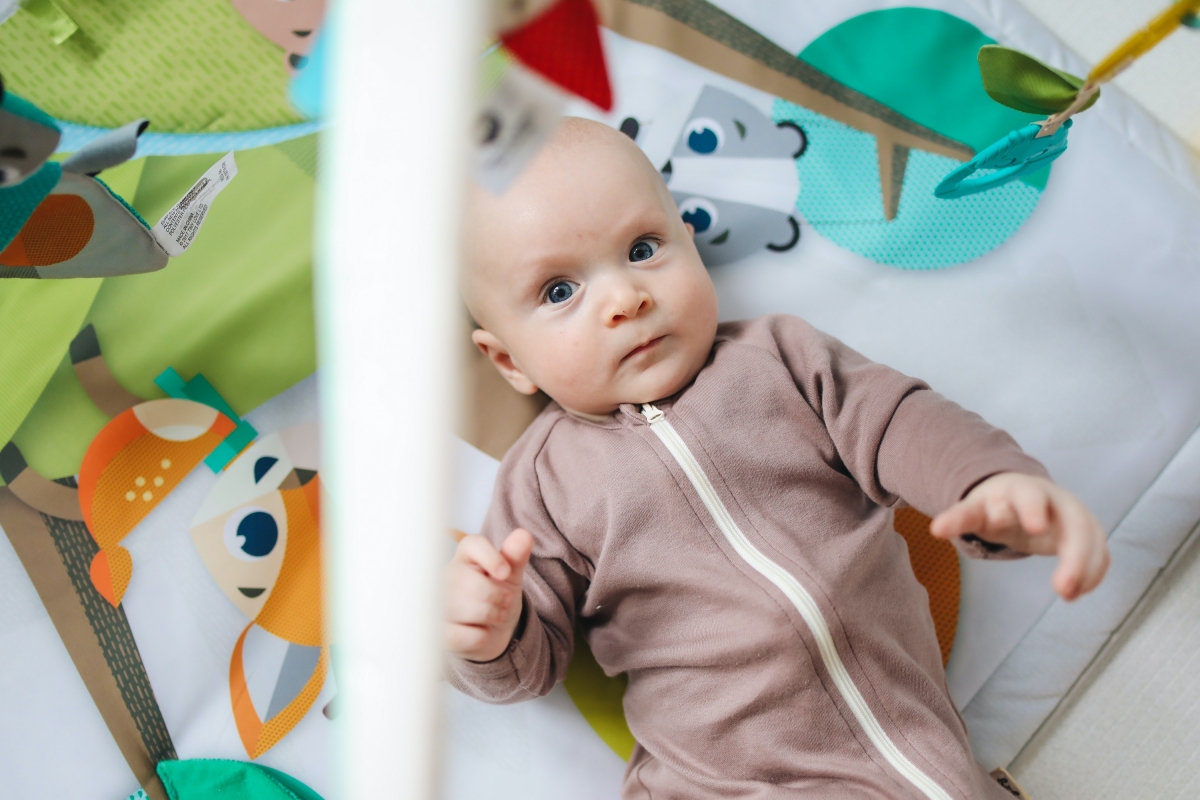
When baby is fed and changed they are more likely to relax and enjoy a few minutes of solo play.
How can I get my child to play independently?
It's important to manage your expectations and that they are in line with the age of your child. Some kids might be totally fine with solo play while other children might only be able to handle a few minutes at a time.
As children get older, they will be able to play alone for longer periods.
The big question is how to encourage independent play when your child always wants your constant attention. You can ease into independent play by physically taking a step back when your child is examining something new or doing their own thing.
If you are at a park and your child is squatting down and looking at flowers or picking up rocks, instead of commentating or quizzing them (What color is that? What shape is that?), stand back and let them concentrate on their discovery for as long as they are interested.
Once they are finished, you can talk to them about their observations and make it a teachable moment. You can do this at home as well when they are concentrating on a toy or activity.
You might also be interested in our Guide to Creating the Perfect Montessori Nursery.
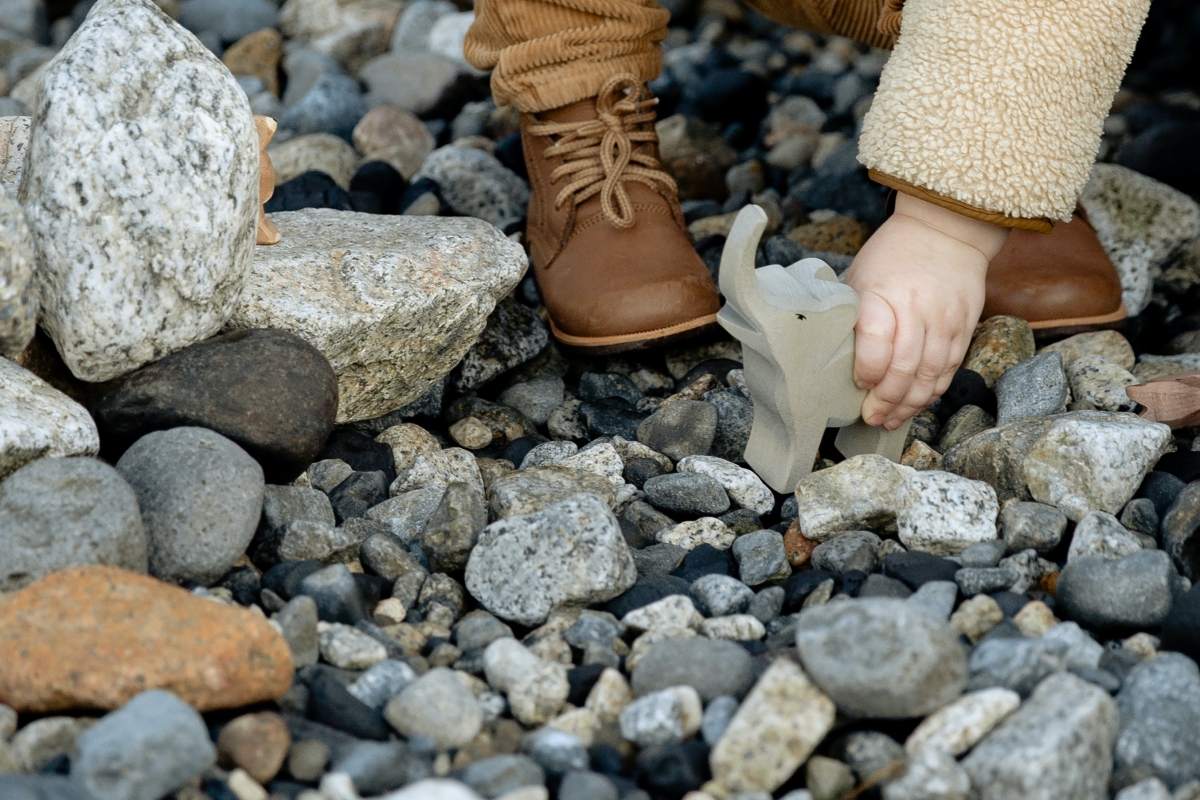
Nature is an easy way to step back as children explore new elements and their surroundings.
Tips to encourage independent play:
Remove toys that light up and avoid having too many toys out. Children can become overwhelmed when there are too many choices.
Look at their schemas: do they like to throw things, sort and categorize, fit pieces together, push buttons, or rotate objects? Set out open-ended toys that interest them and offer new ones to keep them learning.
Make sure to give your child uninterrupted attention before expecting them to play alone.
During independent play:
Once your child is engaged, tell them you will be right back and do a very short task such as getting a cup of coffee or using the restroom. Make it short and be sure to return quickly so they trust that you will return.
Start with short periods of time and gradually increase (by a few minutes) the time you are not directly playing with them. You could be in the same room folding laundry or loading the dishwater.
With older children, you can leave for a few minutes at a time to do a short task and slowly be gone longer until they have the ability to play without following you out of the room.
Check in on your child if they are too quiet but don't interrupt them if they are safe. Once they lose focus, they may stop playing on their own.
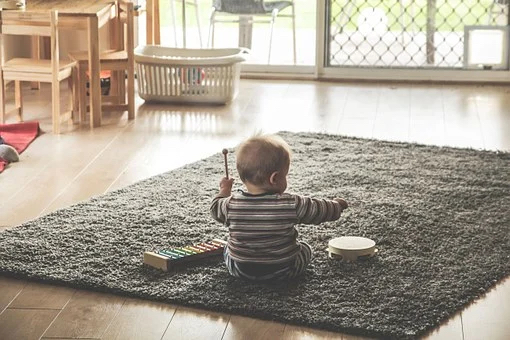
After independent play:
- Tidy the play space together. Make a game of tossing soft toys and/or blocks into a bin for easy clean up.
- Rotate toys to keep things fresh. Have a few toys in a special basket that only comes out for independent play.
- Incorporate quiet time to your daily routine. Set up an engaging activity for your child while you do a daily task.
- After independent play give your child lots of positive attention and ask about their activity.
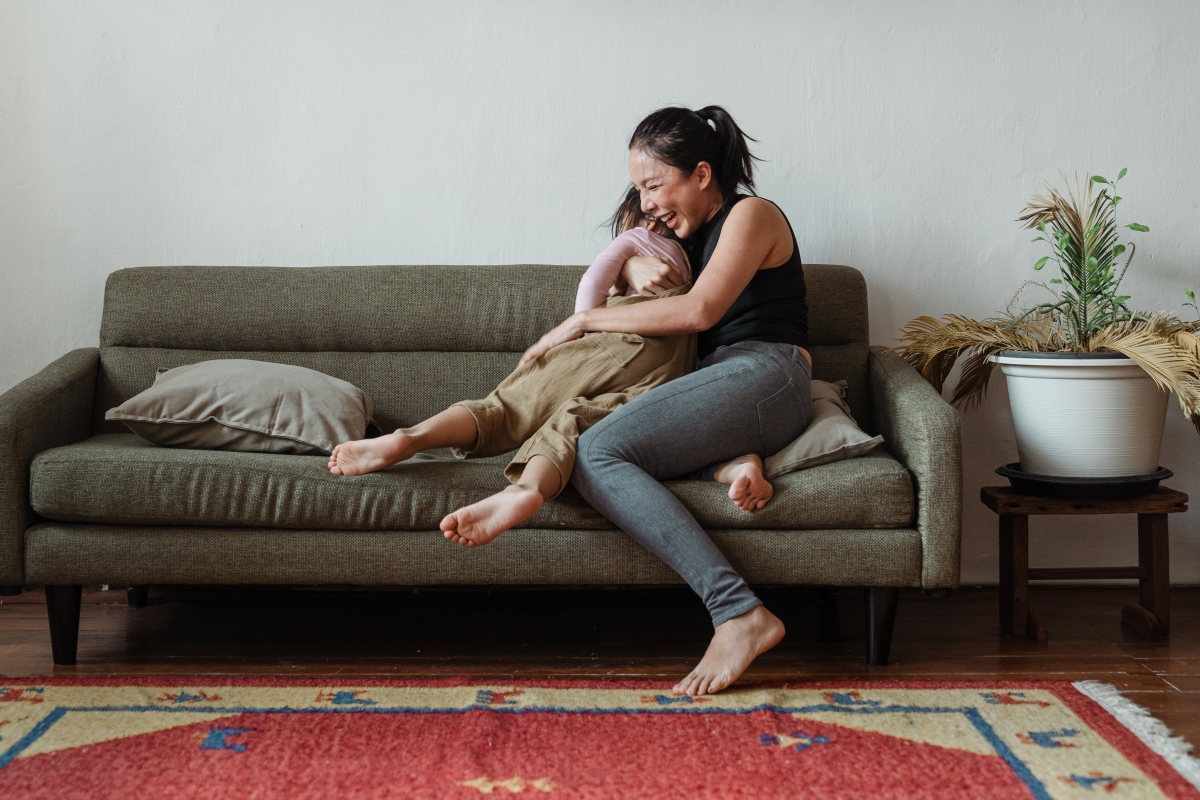
Quality time before and after independent play helps children be confident when playing alone.
How can I create an independent play space for my child?
You don't need to have a designated play room (toddlers will more than likely bring their toys out to be near you anyway).
Safety is the number one priority when it comes to creating a play space for your children. A baby-proof section near where you spend most of your time is helpful for independent play.
Here are 7 tips to creating an independent play area for your child:
- Look around for any hazards in the play area, cover all electrical outlets and make sure that there are no hanging blind cords or anything else that can be a danger for a curious toddler.
- If you don't have carpet, place a thick rug or a cushioned playmat to keep little knees protected when crawling and protect heads from hard bumps if little ones fall over.
- You can use a baby gate to keep younger children contained in a safe play space.
- Remove toys that use batteries which don't keep children engaged. Button batteries also pose a serious danger to children of all ages.
- Montessori shelves are a great way to keep toys accessible while fostering independence.
- You don't have to buy fancy toys. Young children have an amazing ability to play creatively with random household objects like plastic bowls, measuring cups, and silicone cupcake liners.
- Stay within their view so your child feels safe knowing they are not alone. When they can check in with you, they will grow more confident playing independently.
Related Read: How to Set Up Montessori shelves.
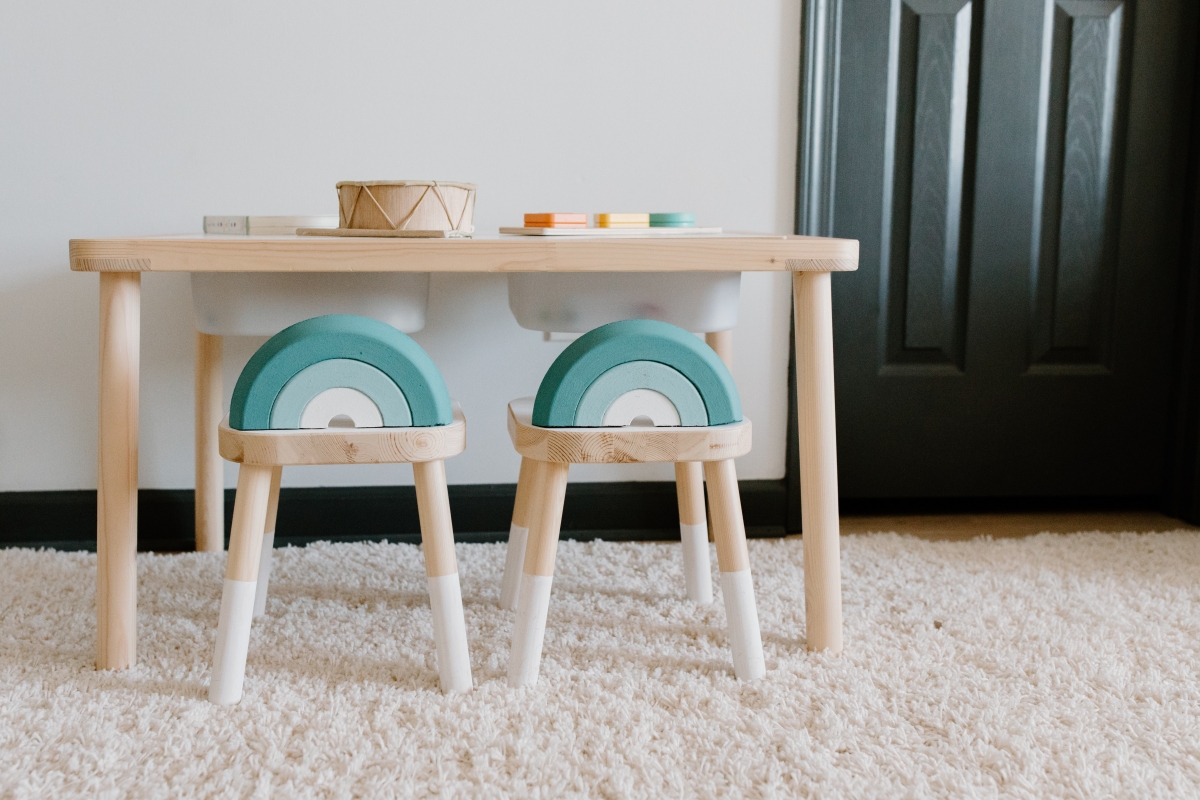
Set up an invitation to play with age appropriate toys or games on a low table.
How can I encourage independent play when my child doesn't want to be alone?
Parents have things they need and want to do and many look forward to the day when their child will be content alone long enough to accomplish something. Remember, children's attention spans are short and while they'll increase with time, in the beginning, independent play often means you're nearby.
Here are some tips to encourage moments of spontaneous independent play and get them accustomed to entertaining themselves:
- Create a special basket or toy box with toys and objects that are only brought out during solo play to keep independent time exciting.
- Offer the use of a timer so your child learns that you will be ready to play in a specific number of minutes. Keep "busy" with a simple task so that you can't join in the play.
- Leave "new toys" out for your child to discover on their own: large pom poms, a spoon, and a bowl or a tower of plastic food storage containers (with lids so they can stack). Be sure to keep it age appropriate for babies and toddlers.
- Set up a music station with any child friendly instruments you have: electric keyboard, shakers, rain stick or even a pot with a wooden spoon drumstick.
Once your child discovers an activity that engages them, quietly take a step back but stay in the room without interrupting so they feel safe and can continue their play.
You might also enjoy: Peaceful Parenting Guide for happier, more cooperative children
More tips for independent play
Change locations to keep little ones stimulated. If you usually have an independent play are in the living space, try moving it to your bedroom with a simple activity set up while you do tasks in there.
When the weather is nice considering moving to the backyard or patio. Water play can be as simple as setting your toddler up with a shallow bin of water with some measuring cups, spoons, and a whisk. Add some figurines or large pom poms for more fun. Be sure to stay close by for safety.
Take some chalk outside and when your child is happily drawing, make a call or check your emails. Chalk and a watering can to "erase" it can keep kids entertained for a while.
Play a variety of music to stimulate children, maybe baby would like classical music to relax while investigating a soft crinkle toy while toddlers might love a more upbeat tune.
Do you have more ideas to encourage independent playtime? Drop them in the comments below.
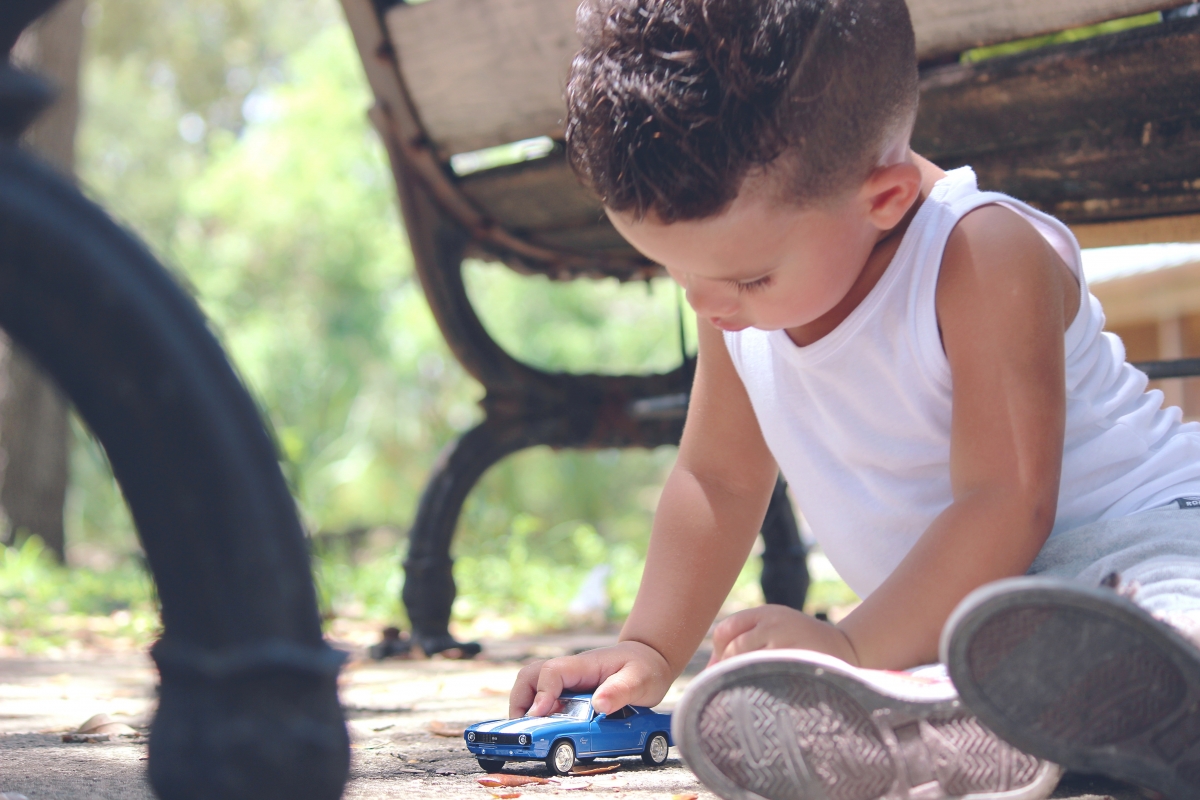
Moving independent play outside or to a new area can keep children engaged longer.
What are some independent play ideas for older children?
Independent activities for a baby or toddlers can look very different than for older kids who can play on their own in a different room. Here are some tips when they seem restless.
- Use your child's interests to create age-appropriate activities for them.
- You can set up stations around your home to encourage them to play on their own depending on what they are in the mood for. A sensory activity at the table, art supplies at an easel, building blocks on the floor next to a remote control car are fun.
- A plastic bin with water, sponges, and a drop of dish soap can make a washing station to "clean" their toy vehicles or water safe animal toys. Moving to the backyard or patio keeps the mess easier to clean up and offers new stimulation.
- Encourage learning by setting out a magnifying glass with a variety of objects like leaves and rocks that they pick up on walks, crystals, and interesting material like lace or burlap alongside paper and supplies for drawing about their discoveries.
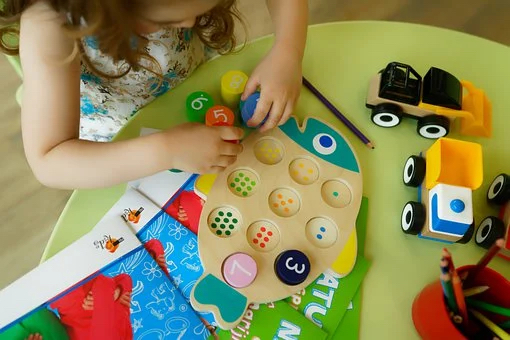
Setting up various stations will be fun for kids to discover throughout the day.
Frequently Asked Questions about Independent Play
Q: Can my child watch a show on their own as independent play?
As tempting as it is, avoid screens for your baby and younger children. It's harder to break bad habits than to prevent them. Children will zone out when watching screen versus actually engaging in playful learning.
Q: How early should I let my child have independent play time?
Letting your baby enjoy a few minutes of tummy time or play time looking up at an activity center while laying on their back can benefit their motor skills and help them learn to entertain themselves when mom or dad are busy, but in the same room. If you start when your baby is a few months old, it will be much easier to slowly increase the time versus introducing independent play when your child is an older toddler.
Q: How can I get my child to play alone when they always want me to play with them?
Start by playing alongside your child but let them take the lead. Engage when they talk to you but sit back a bit when they are focused on their activity and don't commentate which can break their concentration.
Once they are happily engaged, say you need to step away to get a drink and quickly leave but return in a minute or two so they learn that you will be right back. Slowly increase the amount of time you allow them to play alone while you do other things you need or want to do.
Q: What are the four types of play?
While there are many forms of play, children go through four developmental stages of play. Knowing your child's developmental stage of play can help you incorporate solo play in a way that is comfortable to them.
By Crystal Teegarden

Crystal is a gentle parenting mama who loves reading, cooking, and exploring new trails with her husband and son. She is from Los Angeles but currently lives in Portland, OR where she is eating all the vegan food.
Paper Pinecone is the #1 most trusted childcare directory giving parents access to the best preschools and best daycares near you. Parents always search free and childcare providers always list free. Send inquiries about the best daycares and preschools to [email protected].
- stacey's blog
- Log in or register to post comments
